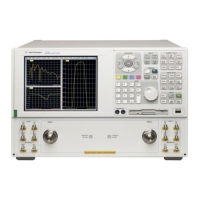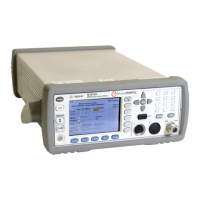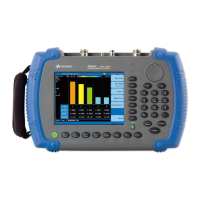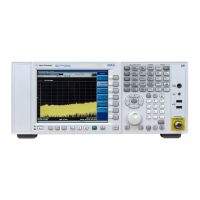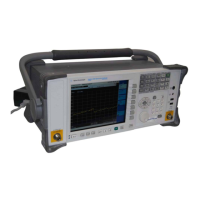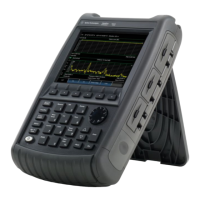Service Guide N5230-90014 4-45
PNA Series Microwave Network Analyzers Troubleshooting
N5230A Measurement System Troubleshooting
Checking the Receiver Group
Equipment Used for These Tests
Getting Ready to Test
Before checking the assemblies, you must open the analyzer.
CAUTION
Use an antistatic work surface and wrist strap to reduce the chance of
electrostatic discharge.
1. Turn off the analyzer power.
2. Unplug the power to the analyzer and disconnect all rear panel connections.
3. Remove the covers from the analyzer. Refer to “Removing the Covers” on page 7-6.
4. With the covers off, plug in the analyzer and turn on the power.
5. For Port 1 measurements, set the network analyzer for an S
11
measurement with a CW
frequency of 1 GHz. Make sure the spur avoidance function is OFF.
For Port 2 measurements, set the network analyzer for an S
22
measurement with a CW
frequency of 1 GHz. Make sure the spur avoidance function is OFF.
Checking the A20 Mixer Brick Receiver Outputs
Perform this procedure if a problem appears to be in one of the receiver channels.
1. Refer to the block diagram at the end of this chapter and to “Bottom Assemblies,
Passive Configuration (Options F06 and F13)” on page 6-14. Locate the flexible cables
W21, W22, W23 and W24 at each receiver channel IF output, A, R1, R2, and B
respectively.
2. Disconnect the flexible cable at the suspect channel.
3. Connect the spectrum analyzer to the suspect channel connector.
4. The measured signal on the spectrum analyzer should be at 7.66 MHz.
• If the signal is present, replace the A5 SPAM board. Refer to “Removing and
Replacing the A5 through A10 Boards” on page 7-16.
5. If the signal is not present, replace the A20 mixer brick. Refer to “Removing and
Replacing the A20 Mixer Brick (QuintBrick)” on page 7-26.
Equipment Type
Model or
Part Number
Alternate Model
or Part Number
Spectrum analyzer 8565E
856xE
a
a. Must be capable of measuring signals at 8.333 MHz and 41.667 MHz.
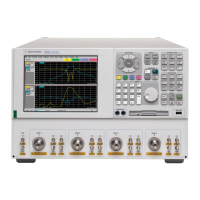
